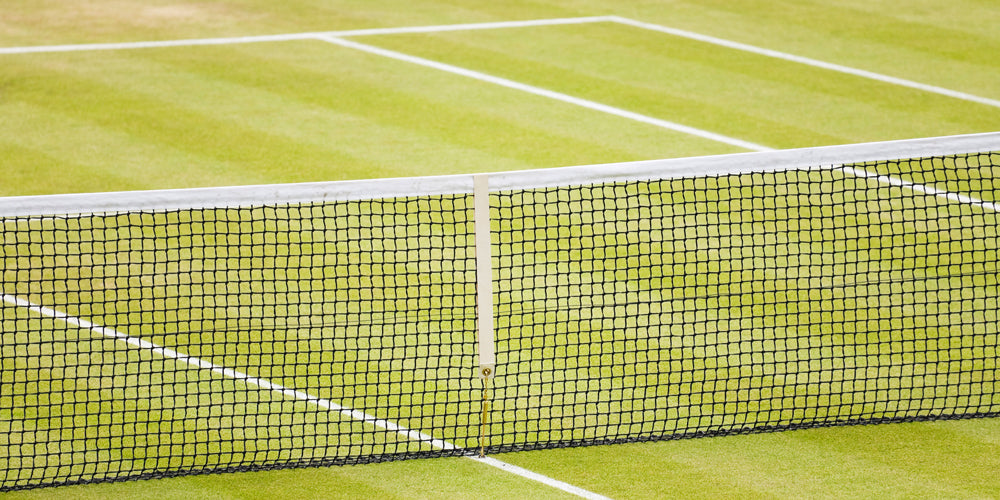The scheduling of tournaments during the tennis season isn't always blockbuster news, but for tennis' serious fans, the typical two-week turnaround between the French Open and Wimbledon always makes for interesting discussion. This year, however, for the first time the tournament calendar has been rearranged to create a three-week grass court "season" leading up to the de facto tennis world championship at Wimbledon. But, what's the big deal, anyway?
First of all, a little explanation. There's always some adjustment when moving to a new playing surface. Each of the three popular surfaces has slightly different characteristics including speed of the ball after the bounce, height of the bounce, quality of bounce, and even footing. Traditionally clay produces the slowest courts with the highest bounce, favoring a baseline, "grinding" style of play. Grass is typically the fastest surface, favoring an attacking style of play and big serving—serve-and-volley players can still have success on grass, though not as much as in the old days. Hard courts tend to be somewhere in between, though builders can control the speed of hardcourts based on how much grit they put in the paint. These days the slowest hard courts are comparable in speed to clay courts while the fastest hard courts probably play just as fast as grass.
The surfaces have changed over the years—grass courts have become slower and the bounces are truer, while clay courts have gotten a little bit faster. So, while we're not talking about as big of a switch as in the past, it's still a big transition from the slowest surface—French Open clay—to (arguably) the fastest—Wimbledon's grass. And I only say arguably because I've heard that the US Open courts now are about as fast as Wimbledon's courts.
Despite the difficulty of transitioning between the two most disparate surfaces, the grass court "season" is extremely short. Tennis originated as a lawn game, but the popularity of grass court tennis has vastly declined over the years—mostly, I'd imagine, because of the difficulty of maintaining grass courts for regular play—and the number of grass court tournaments gradually dwindled. Basically, as the prestige of winning Wimbledon has continued to increase, the actual importance of winning on grass has really declined. You'll see clay court specialists, but you'll never see true grass court specialists—there simply aren't enough grass court points available, even now.
If you look at the other Slams (with perhaps the Australian Open being a slight exception), there's quite a run up of tournaments on the same surface before each Slam. The clay court season actually starts near the beginning of April and runs all the way through the end of May, culminating with the French Open. The clay court season on the men’s side includes three Master's 1000 titles (which are the highest tier below Grand Slams), one 500, and eight 250s. On the women's side, the European clay court season includes four Premier level tournaments and five International level events. Some of the tournaments are on the same week, but still, that’s A LOT of top-level tournaments.
The run up to the US Open (the American hard court season) starts at the end of July and culminates with the US Open. The American hard court season includes two Master's 1000s, one 500, and three 250s for the men. The women have four Premier events and one International event in the same span.
As I mentioned earlier, the lead up to the Australian is really only two weeks, but since December is basically an off month, there's time for practice and preparation even though there aren't a ton of tournaments.
Before this year, there were only two weeks between the French Open and Wimbledon, so there was very little time for grass court preparation. Most top players won’t play a tournament the week before a major, and most of the top players won't play the week after a major IF they make the second week (if they lose early, they may take a wildcard into a tournament the week after a Slam ends, depending on their schedule). Now, there are three weeks between, so there's more time for grass court preparation AND there are now two 500 level tournaments in that middle week so there's much more opportunity for grass-specific preparation and more opportunity for grass court points. In the end, that's probably good for match quality at Wimbledon.
I'd also imagine that offensive minded players (including Roger Federer) probably had at least an unofficial say in it, too. Adding more tournaments on grass means more points available for players who like playing on fast courts. It also serves to help "balance" the schedule, so to speak, in terms of available points-per-surface, though grass still isn't even close to the other two surfaces. Finally, I've heard some fans (mostly older tennis "purists") complaining that tennis on all surfaces is too much the same: long, grinding rallies from the baseline. Of course, fans had the exact opposite complaint in the late 90s when courts—especially grass—were really fast and points were really short and fast. Either way, it may be an attempt to also make grass court tennis a little more relevant and add some more stylistic diversity into the game.
Tennis' Grass Court Season Is Growing

